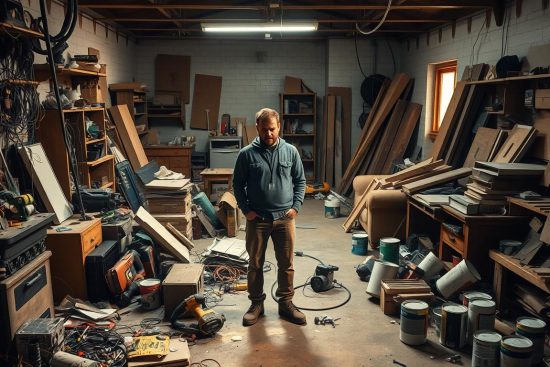
Choosing the perfect floors for your home is a big decision. Solid hardwood brings classic charm with its natural grain patterns and decades-long durability. Meanwhile, engineered hardwood offers modern flexibility, especially in spaces prone to humidity like basements or kitchens. Both options elevate your home’s design, but understanding their differences ensures you pick the best fit.
Brands like Bruce and Woodland Reserve showcase stunning species like red oak, hickory, and acacia. These woods provide unique colors and textures to match any style. Solid planks, such as those from American Spirit, deliver timeless elegance but require specific installation methods. Engineered products, on the other hand, often feature glue-down or nail-down options for easier adaptation to subfloor types.
Practical factors matter too. While solid wood can be sanded and refinished multiple times, engineered layers resist warping in moisture-heavy areas. Prices vary based on materials and installation complexity, so balancing budget with long-term value is key. Let’s explore how these choices align with your lifestyle and design goals.
Key Takeaways
- Solid wood offers timeless appeal but requires careful installation in stable environments.
- Engineered planks excel in moisture-prone areas due to their layered construction.
- Top brands like Bruce provide diverse species, including red oak and hickory.
- Glue-down or nail-down methods cater to different subfloor needs.
- Cost varies by material quality, installation type, and long-term maintenance.
Understanding Flooring Types: Hardwood and Engineered Variations
Every step in your home tells a story—what’s your floor’s narrative? Two materials dominate interior design: solid planks and layered engineered options. Each offers distinct advantages depending on your space’s needs.
Solid Planks: Nature’s Artistry
Solid hardwood showcases untamed grain patterns and rich color variations. Species like oak and hickory deliver unmatched texture, aging gracefully over decades. Finishes range from sleek smooth surfaces to rustic wire-brushed or distressed styles, amplifying a room’s character.
Bruce’s red oak collections highlight this material’s durability. However, solid planks thrive best in stable humidity environments. As noted in timeless design trends, their classic appeal rarely fades.
Engineered Innovation: Built for Adaptability
Engineered options combine a real wood veneer with a moisture-resistant plywood core. This layered construction allows installation in basements or kitchens where humidity fluctuates. Brands like Woodland Reserve use versatile installation methods, including glue-down systems for concrete subfloors.
| Feature | Solid Planks | Engineered |
|---|---|---|
| Construction | Single wood layer | Multi-layer core + veneer |
| Best For | Living rooms, bedrooms | Basements, kitchens |
| Surface Finishes | 3+ texture options | 2-3 texture options |
| Refinishing Potential | 5+ times | 2-3 times |
Maple’s pale tones or hickory’s bold streaks let you customize your aesthetic. While both products enhance homes, your choice hinges on balancing practicality with visual impact.
Hardwood Flooring: Timeless Beauty and Practical Performance
Investing in your home’s foundation starts with the ground beneath your feet. While upfront costs matter, long-term value shines through in materials that age gracefully. Let’s break down what makes these surfaces a smart choice for lasting elegance.
Cost Comparison and Investment Value
Solid hardwood typically costs $8–$15 per square foot, while engineered options range from $6–$12. Premium species like oak or maple can push prices higher, but they add unmatched character. Engineered planks offer savings upfront, especially in moisture-prone areas where installation fees drop by 20–30%.
Refinishing solid planks 5+ times extends their lifespan to 100 years—a feature unmatched by most engineered products. As noted in this hardwood flooring guide, this “reset button” for scratches makes it a favorite for growing families.
Durability and Maintenance Insights
Weekly sweeping and seasonal humidity control prevent warping. Avoid wet mops—they’re the #1 cause of water damage. Engineered options handle spills better but can’t match the 3mm wear layer of solid wood, which allows deeper refinishing.
Bruce’s red oak collections, for example, withstand decades of foot traffic. Their smooth surfaces hide dust, while wire-brushed textures camouflage minor dents. Whether you choose solid or engineered, proper care ensures your floors outlive trends.
Design and Aesthetic Appeal for Every Home
Your floors set the stage for your home’s personality. Whether you crave cozy warmth or sleek modernity, materials like oak or maple create visual harmony. Let’s dive into how colors, textures, and wood types shape your space.

Exploring Colors, Textures, and Finishes
Light stains like natural maple brighten rooms, while espresso-toned hickory adds drama. Brands like Empire® offer wire-brushed textures that highlight wood grain subtly. For bold statements, Lumber Liquidators’ hand-scraped planks mimic antique charm.
Prefinished options arrive ready to install with factory-applied protective layers. Unfinished products let you customize stains to match unique décor. High-gloss surfaces reflect light in formal spaces, whereas matte finishes hide scratches in busy households.
Selecting the Perfect Wood Species
Oak’s versatile grain patterns suit traditional and modern styles. Maple delivers a clean, uniform look with pale undertones. Hickory stands out with striking color variations—ideal for rustic kitchens or entryways.
| Species | Best For | Texture Options |
|---|---|---|
| Oak | High-traffic areas | Wire-brushed, smooth |
| Maple | Minimalist spaces | Matte, low-sheen |
| Hickory | Statement floors | Distressed, hand-scraped |
Pair warm-toned planks with neutral furniture for balance. Cool gray engineered hardwood complements modern metal accents. Your floors aren’t just surfaces—they’re design anchors that tie rooms together.
Shopping for Your Perfect Floor: Product Features and Options
Finding the right floor involves balancing style and practicality. Let’s explore how product specs and brand offerings simplify your search.
Insights from Leading Brands and Product Listings
Bruce offers red oak planks with glue-down installation at $7.69/sqft. Their 5” wide boards feature scratch-resistant finishes perfect for busy homes. American Spirit specializes in nail-down hickory options starting at $4.49/sqft, ideal for traditional designs.

Installation Types, Sizes, and Pricing Considerations
Glue-down systems work best on concrete, while nail-down suits plywood subfloors. Wider planks (7.5”) create modern looks but cost 15–20% more than standard 3” sizes.
| Brand | Installation | Sizes | Price Range |
|---|---|---|---|
| Bruce | Glue-down | 5″ width | $6.99–$8.50/sqft |
| Woodland Reserve | Floating | 7.5″ extra-wide | $5.25–$7.10/sqft |
| American Spirit | Nail-down | 3.25″ traditional | $4.49–$6.80/sqft |
Always check warranty terms—top brands offer 30+ years of coverage. View product samples in your lighting to see true colors before buying. Online tools let you compare engineered hardwood thickness and wear layers side-by-side.
Pro tip: Bookmark listings with detailed specs. Filter by price, installation type, and wood species to narrow choices quickly. Your perfect floor is just a few clicks away!
Conclusion
Your home deserves surfaces that marry style with everyday resilience. Solid hardwood delivers classic warmth through materials like red oak and hickory, perfect for dry, stable spaces. Meanwhile, engineered options shine in kitchens or basements with their moisture-friendly layers and versatile installation.
Consider long-term value: solid planks can be refinished repeatedly, while engineered products often cost less upfront. Species like maple offer light, airy tones, while oak’s bold grain adds depth. Maintenance varies too—weekly sweeps keep both types looking fresh, but engineered planks handle spills more gracefully.
Ready to explore? View detailed listings to compare textures, colors, and price ranges. Brands like Bruce and Woodland Reserve provide specs that highlight wear layers and warranty terms. Whether you prioritize natural beauty or practical adaptability, you’ll find a product that fits your lifestyle.
Armed with these insights, shop confidently. Your dream floors—durable, stunning, and uniquely yours—are within reach!


